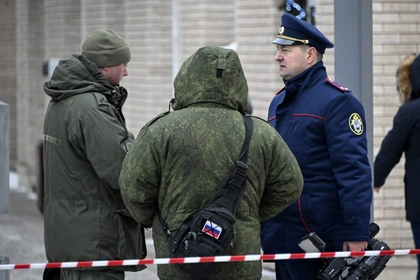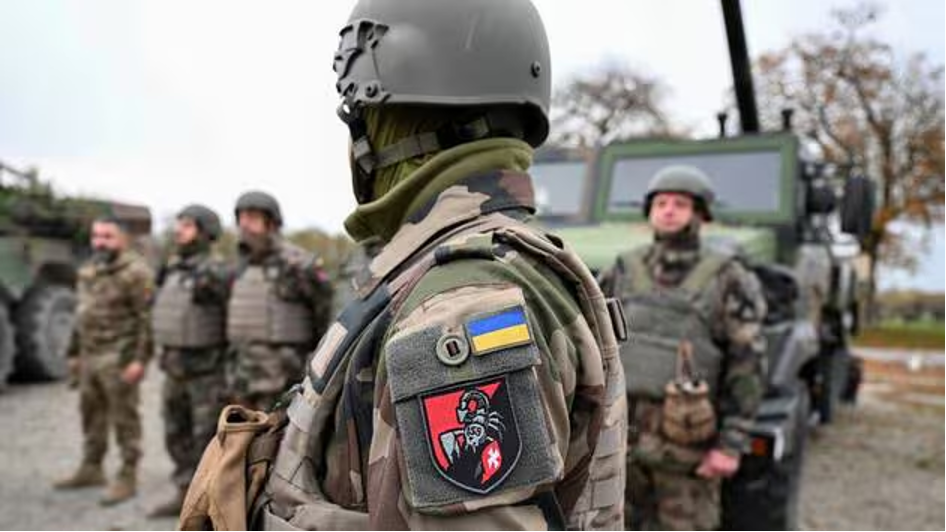Fighter jets would be ideal, but they aren’t coming soon.
The Kremlin is now employing a new tool in its long-term strategy to turn its invasion of Ukraine into a frozen conflict too bloody for Kyiv and its Western allies to continue – massed strikes of precision-guided glider bombs Ukrainian forces currently have no effective means of countering.
JOIN US ON TELEGRAM
Follow our coverage of the war on the @Kyivpost_official.
The latest wave of 250 and 500 kg munitions, according to field reports, at least ten weapons, were dropped by Russian fighter bombers hitting Ukrainian positions around the Donetsk Region town of Avdiivka in the morning of Tuesday, Oct. 10.
In the afternoon Russian forces were reportedly attempting to encircle Avdiivka using “all means.”
“For over a year, there has been the danger that (Avdiivka) can be occupied, but now the situation has worsened rapidly,” said Vitaliy Barabash, head of the town's administration, AFP reported.
According to local sources, Russian commanders have kicked off nearby counterattacks with “two brigades” of infantry against thick fortifications held by Ukrainian forces effectively without loss of ground since 2015.
Ukrainian army sources confirmed the Tuesday assaults were accompanied not just by conventional artillery, but by something new: multiple drops of guided bombs supporting the Russian ground attack, and aiming at Ukrainian trenches, bunkers and headquarters.

Ukraine Must Join the Joint Expeditionary Force, and the UK Should Lead the Way
The Ukraine-held city Berislav on the Dnipro River, on the war’s southern front, like Avdiivka is located on the front line, in Berislav’s case with Russian forces controlling the opposite side of the waterway.
On Oct. 4 “dozens” of Russian glider bombs hit buildings and positions in Berislav and adjacent communities, local official Oleksandr Prokudin told media.
The Russian weapon of choice for these strikes, official sources say, are winged UPAB-1500 and FAB-500 glide bombs the Kremlin first fielded in April, but only managed to deliver to the field in quantity in September.
Along with old Soviet-era “dumb” bombs turned into modern precision-guided weapons with the installation of a guidance kit with snap-out wings and electronics making the bomb programmable to fly to a precise location and blow up, Russian military pilots in recent weeks have shifted its tactics from avoiding attacking frontline Ukrainian positions to hitting them in coordinated air strikes with dozens of fighters each carrying two or more smart bombs.
Russian fighter bomber crews according to accounts from both sides exploit the bombs’ ability to glide as much as 50 km (some estimates are 70 km) from drop to target to stay well out of reach of Ukrainian anti-aircraft systems. Thus far, the record number of glider bombs dropped on Ukrainian positions in one day was more than 40 on Oct. 2, Kyiv officials have said.
Berislav 05.10, moment of a Russian glide bomb striking a hospital... pic.twitter.com/zbWv4IV4tQ
— Per Ekstrom (@PerEkstrom1) October 5, 2023
Yury Ignat, Ukrainian air force spokesman, in an Oct. 9 statement said that Ukraine has no effective means of intercepting the incoming bombs or interfering with the Russian bombers launching glider bombs currently attacking with impunity. He said the heaviest bombs have been devastating, with weights as much as 1,500 kg. Munitions that size, in the Russo-Ukraine war, in the past have been sufficient to level a 14-story building or dig a crater the size of a swimming pool, in a single blast.
According to Ukrainian air force intelligence, Ignat said, Russian air units operating modern Su-34 and Su-35 fighter bombers carrying glider bombs are flying 20-30 sorties a day against targets along the fighting front. The Kremlin is ramping up that air campaign and it’s not clear when the maximum effort will be reached, he said.
“The occupiers (Russian air force units) have begun attacking with these KABs (glider bombs) en masse. At first, these were individual strikes with bombs weighing 500 kg. (Now) it’s even 1m500 kg. bombs being dropped, and they’re being used more and more,” Ignat said.
Ukraine is the recipient of a massive stream of air defense systems donated by Western allies ranging from hand-held Stinger missiles, German Gepard anti-aircraft autocannon, Hawk missiles dating back to the 1960s, and Soviet-era S-300 radars and missiles to America’s top-end Patriot air defense system and the thoroughly modern French/Italian SAMP/T anti-aircraft system.
Of these systems, only the relatively immobile Patriot and SAMP/T systems have sufficient range and targeting equipment to have a decent chance of intercepting a Russian Su-34 or Su-35 before it drops a glider bomb. The problem for the Ukrainian military is that positioning its best – and most expensive anti-aircraft systems near the front line would expose them to Russian tactical missile strikes.
In practice, according to news reports, the Ukrainian military has concentrated the few advanced air defense systems it has around key military production and command and control facilities in the capital Kyiv and one or two other major cities. This has improved protection of those locations from Russian cruise and ballistic strikes – in Kyiv’s case dramatically – at the price of leaving frontline positions and troops without effective protection against Russian glider bombs.
Ukraine’s national leadership for more than a year repeatedly requested assistance in training and fielding modern fighter jets as a mobile means of protecting its air space, before Washington finally approved a small-scale program envisioning the Dutch-Danish donation of 25-30 American F-16C fighters to Ukraine, and a pilot training program with those nations and also the US, Romania and Great Britain participating.
Missiles and radars typically carried by the F-16C, were the aircraft deployed in sufficient numbers in Ukrainian air space, would almost certainly seriously degrade, and possibly end completely Russian bomber pilots’ current ability to launch glider bombs against Ukrainian front lines with impunity, military analysts say.
According to Ukrainian news reports, the earliest estimated deployment of a small number of the F-16s is Spring 2024, with pilots only trained in basic operations.
Estimates vary on how many F-16s the Ukrainian air force would need to win air superiority against the Russian air force, but in all cases the guess is well above the 5-6 fighters the Ukrainians appear to be on track to receive in the first half of 2024.
You can also highlight the text and press Ctrl + Enter






